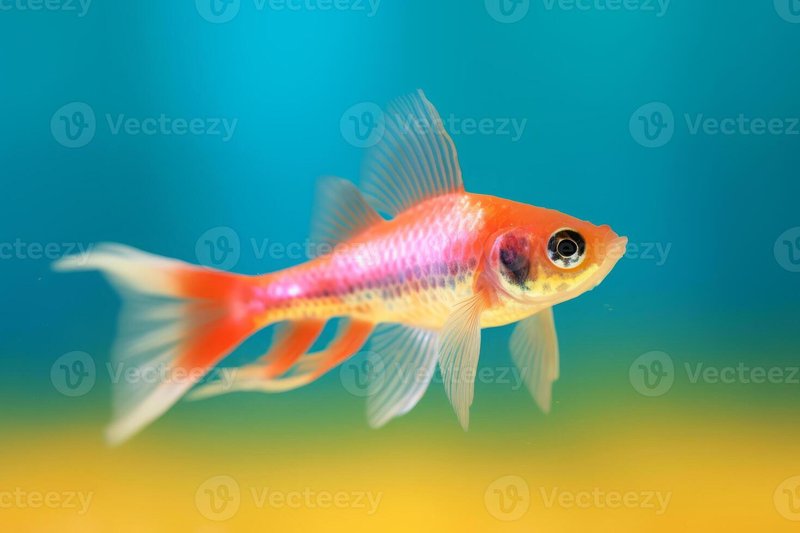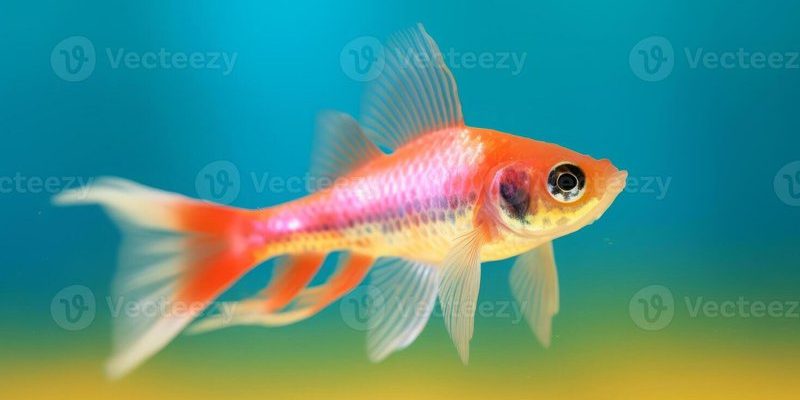
Imagine you just brought home a lively little swordtail; it’s swimming around your aquarium, showing off its bright colors. A few days later, you notice something seems off. It’s not as active, and its fins look a little ragged. Just like with any pet, keeping an eye on their health is crucial to provide the best care possible. Let’s dive into some common health issues swordtails face and how to treat them, so you can keep that little swimmer thriving in your tank!
1. Fin Rot: A Common Swordtail Issue
Fin rot is one of the most prevalent health problems that swordtails face. Think of it as a “cold” for fish, where their fins start to deteriorate, becoming ragged or frayed. This problem often stems from poor water quality, stress, or injury. If your fish is showing signs of fin rot, you might see discoloration or a cloudy appearance at the fin edges, which can make it look like they’re wearing a tattered coat.
To treat fin rot effectively, it’s essential first to assess the water quality. Make sure the tank is clean and that the ammonia, nitrite, and nitrate levels are within safe ranges. Here’s a quick checklist:
- Check the tank’s pH, ideally between 6.5 and 7.5.
- Perform regular water changes of at least 25% weekly.
- Ensure your tank has adequate filtration.
Once your environment is stable, you can add a broad-spectrum antibiotic to the tank. Many hobbyists have had great success with medications that specifically target fin rot, but remember to follow the dosing instructions. Regularly monitoring your swordtail during treatment is key, as these little guys often respond well to a little extra TLC.
2. White Spot Disease (Ich): The Sneaky Parasite
White spot disease, commonly known as Ich, is another issue that can plague swordtails. It’s a bit like a bad case of chickenpox for fish, where little white spots appear all over their bodies and fins. You might notice your fish rubbing against objects in the tank, which they do to alleviate irritation caused by the parasite.
If you suspect your swordtail has Ich, act quickly! Here’s what you can do:
- Increase the tank’s temperature gradually to around 82°F (28°C) to speed up the parasite’s life cycle.
- Add aquarium salt to the water to help kill the parasites; about 1 tablespoon per 5 gallons is a good starting point.
- Make sure you’re treating for Ich with a suitable medication, following package guidelines.
Keep in mind that Ich can spread quickly, so if you have multiple fish, it’s best to treat the entire tank. This ensures that any hidden parasites are taken care of, so your swordtail can get back to being its cheerful self!
3. Swim Bladder Disorder: Floating or Sinking
Swim bladder disorder is a common issue in swordtails that can leave them struggling to stay afloat. Imagine your friend at a pool party who just can’t stay above water—this is what your fish might feel like. This condition can occur for various reasons, from overeating to infections.
If you see your swordtail swimming at an odd angle, floating at the surface, or struggling to sink, here’s how to help:
- First, check if the fish has been overfed. If so, skip a meal or two to help clear its digestive system.
- Consider adding some freeze-dried daphnia or blanched peas to its diet, as these can act as natural laxatives.
- If symptoms persist, a treatment of Epsom salt may help by reducing swelling; about 1 teaspoon per gallon is often recommended.
It’s essential to monitor your swordtail’s condition closely. While swim bladder issues can often resolve with adjustments in diet, persistent problems may require a vet’s advice for further treatment.
4. Fish Tuberculosis: A Serious Concern
Fish tuberculosis is a serious health concern that can affect swordtails and other aquarium fish. It’s a bacterial infection that can be deadly, and honestly, it’s not something to take lightly. Symptoms can include weight loss, unusual swimming patterns, and lesions on the body.
If you suspect your swordtail might have this disease, it’s important to act fast:
- Quarantine the affected fish to prevent spreading. This is crucial for the health of your other fish.
- Maintain excellent water quality with regular changes and monitoring.
- Consult a veterinarian who specializes in fish for diagnosis and treatment options.
Keep in mind that treating tuberculosis can be tricky. Many home remedies are ineffective, so a professional’s input can be vital here.
5. Velvet Disease: The Golden Dust
Velvet disease is another pesky parasite that can infect swordtails. If your fish looks like it’s been dusted with gold powder, it might have velvet disease. This condition is often harder to spot than Ich but can lead to severe health issues if not addressed.
Here’s how to tackle velvet disease:
- Increase the water temperature gradually—this helps speed up the life cycle of the parasite.
- Add an anti-parasitic medication specifically designed for velvet.
- Ensure your fish have plenty of hiding spots to reduce stress during treatment.
Overall, velvet disease requires swift action. Keeping your aquarium well-maintained and the water parameters in check can go a long way in preventing this issue in the first place.
6. Keeping Your Swordtails Healthy: Prevention Tips
While it’s important to know how to treat common health problems in swordtails, prevention is always better than cure. Think about it like keeping your car in good shape to avoid breakdowns. Here are some tips to keep your swordtails in top condition:
- Regularly test the water quality and ensure all parameters are stable.
- Feed a balanced diet and avoid overfeeding to reduce the risk of digestive issues.
- Maintain a clean tank with proper filtration and regular water changes.
- Observe your fish daily for any signs of stress or illness.
Creating a supportive environment can help your swordtails thrive, making it less likely they’ll face health issues down the line.
7. Conclusion: The Journey to Happy Swordtails
Caring for your swordtails is an enjoyable adventure, but it comes with responsibilities. By understanding common health problems and how to treat them, you can foster a healthy environment for your little swimmers. Remember to keep your aquarium clean, monitor water quality, and pay attention to your fish’s behavior.
With time and care, your swordtails can live long, vibrant lives. There’s nothing quite like watching them swim happily in your tank, showcasing their beautiful colors. So keep that tank clean, maintain a balanced diet, and enjoy the wonderful world of swordtails!

